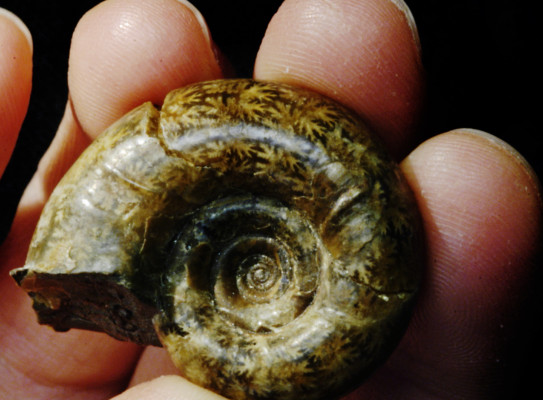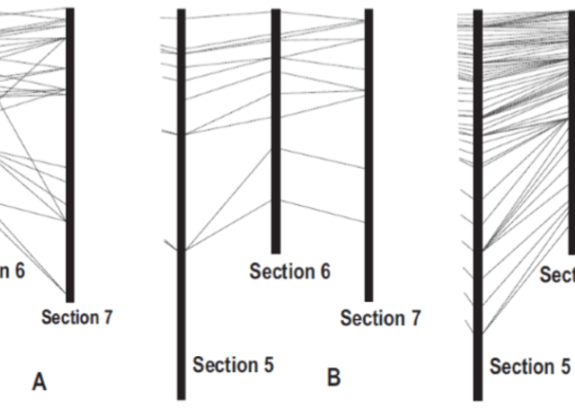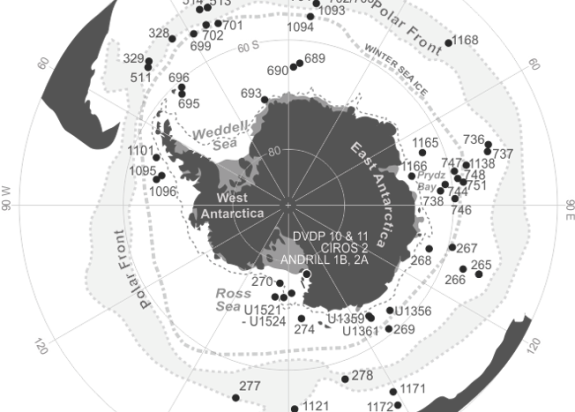
CONOPNarrowing down the fossil options using statistical software

GNS Science uses statistical software called “Constrained Optimisation” to find “the best solution”.
Overview
Biological remains, or fossils, are one of the earliest methods used by geologists to measure time in rocks. But fossils have so many variations, no computer would ever finish running them.
Now, instead of relying on macro-fossils which you can see with the naked eye, we mostly use micro-fossils where you need a microscope. Why? Micro-fossils are more abundant in smaller-sized samples.
We’re using a number of oceanic micro-fossils such as foraminifera, diatoms, dinoflagellates, radiolarians and nannofossils. We use the pattern of their evolution to correlate sediment cores across the Southern Ocean over the last 50 million years.
We use software called Constrained Optimisation, or CONOP, to randomise the search and find the best solution for dating rocks.
The project aims to
- document the evolution of micro-fossils across Zealandia and the Southern Ocean
To achieve these objectives, we
- compile available datasets from ocean sediment records as input for CONOP and assess the results in the context of independent age and geological constraints
The project
Why CONOP is so useful
In simple terms, CONOP helps researchers cut through a huge amount of data in a shorter amount of time by finding the commonalities and removing the mismatches.
CONOP tests various correlation solutions and the relative order of species evolution using a series of criteria and constraints such as observed co-existing species and age information to optimise the sequence of events.
Then, it randomly modifies the sequence and assesses any subsequent mismatches between all of the sediment cores.
Without CONOP, testing every possible sequence would take years.

This is how CONOP orders the sequence between three sites.
A: Original order of biostratigraphic events which often have different orders because of sampling issues.
B: The events whose order is consistent across sites. CONOP then starts random placement of the rest of the events, testing how coherent it is with other sites.
C: The final solution constrained by known events or chronological datums.
Using CONOP for astrochronology
The CONOP framework is particularly useful as it can contain other geologic data like seismic horizons, lithology, geochemical markers and chronology.
GNS Science is currently working with international colleagues to incorporate astrochronology – the Earth system response to orbital cycles of Earth about the Sun. This will improve the resolution of dating from biochronology which typically has an uncertainty of millions of years to thousands of years. We can use the CONOP solution to understand biodiversity, extinction and origination rates, the global carbon cycle, and the distribution of microfossils across the Southern Ocean.

CONOP and Zealandia
We are also extending this database to Te-Riu-a-Maui/Zealandia to use GNS Science’s vast biostratigraphy data collections.
We will use it with our paleogeographic maps and our paleoclimate research to determine how the tectonic and climate evolutions of Zealandia have impacted biodiversity.
The fisheries connection
As the climate warms, the habitats for microfossils will change and this will have broader impacts on our fisheries and the ability for the ocean to uptake carbon dioxide. This biostratigraphic database spanning 50 million years will be used to test the response of past biodiversity to climate change.

Research project details
Collaborators: Victoria University of Wellington, University of Wisconsin-Madison (USA)
Duration
Funding platform
Ministry of Business, Innovation and Employment’s Strategic Science Investment Fund
Status
Ongoing
Programme leader
Vaughan Stagpoole, GNS Science